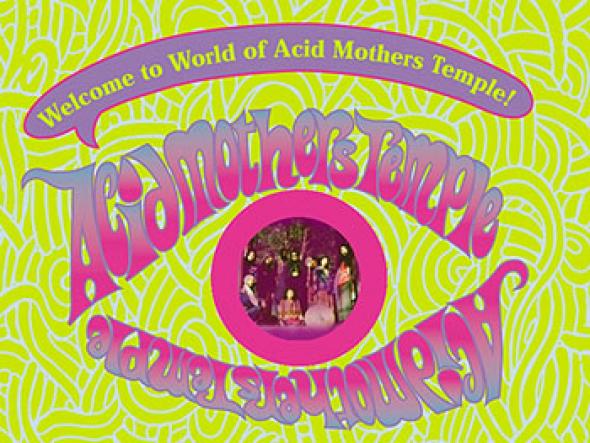Zodiac Genre Warp
Stephen Robinson on the twists and turns of the Japanese musical underground.
Initial exposure to the fiscally frightening and nominologically challenging world of the Japanese Underground is apt to leave one in a state of disorientation. In the past, disorientation vis-à-vis Japan has been redressed through the projection of a presumed exoticism or inscrutability — as if some dark resource, buried deep within the Japanese psyche, enabled alchemical transformations. Victorian travellers returned with rhapsodic visions of a miniature fairyland; modern dystopian writers enshrined it as the living emblem of technocratic excess; and by the same disjunctive token, the chasm that exists now between the naked consumerism of J-Pop and the commercially un-cooptable wing of the Japanese Noise fraternity is reduced to the mere expression of a society at the crazed end of hyper-capitalism. This is, of course, as culturally reductive as it is aesthetically blind.
But something has gone awry in the process of importing, appropriating and assimilating western models. And nowhere is this more apparent than in the particular seam of the Japanese Underground fixated with an otherwise deeply unfashionable ‘psychedelia’. After the first wave of home-grown psychedelia emerged in Japan in 1968, it made a move — perhaps incomprehensible in the West — allowing today’s Japanese psychedelia to take root. In the aftermath of the punk and new wave scenes, and with a generation of musicians schooled in such diverse genres as late ‘60s free-jazz and acid folk, the Japanese Underground managed to reconcile the irreconcilable, producing a hard-core aesthetic built on staggering musical dexterity, which achieves sense-fracturing, mind-altering overload. This is a psychedelia stripped to the core of all the usual psychedelic referents.
There are perhaps two sides to the psychedelic underground. Firstly, the quieter, fractured ‘psychedelic pop’ of Che-SHIZU, Maher Shalal Hash Baz, Reiko Kudo and the Osaka-based ORG label. Their releases are infrequent, in limited runs and inordinately expensive even by Japanese standards. Their sound-worlds likewise inscribe a sense of the elusive or unobtainable. They are fragile, almost evanescent; a clutter of casual allusion. Secondly, and in stark contrast, are the ‘heavy psychedelic’ bands which coalesce around Tokyo’s PSF label. These bands are as disorientatingly excessive in output as they are sonically extreme. An unmappable proliferation of names — Music Transonic, Mainliner, High Rise, Ruins, Fushitsusha, Toho Sara, Vajra, Acid Mothers Temple and the Melting Paraiso UFO — all revolve around an axis of four musicians: Nanjo Asahito; ‘motor-psycho’ guitarist Makoto Kawabata; Yoshida Tatsuya; and vocalist, noise-guitar troubadour and 21st Century hurdy-gurdy man, Keiji Haino. Their musical explorations range from the acid-levitation freak-outs of Acid Mothers Temple and the Magma inspired multi-genre pile-ups of bass and drums duo Ruins to the shamanistic acid-folk of Toho Sara. The diminutive Haino remains, perversely, a towering figure here. With his power trio Fushitsusha, he has consistently explored depths hitherto unimagined within rock orthodoxies. Their fractures, ellipses and explorations of duration owe as much to Morton Feldman as they do the their own avowed heroes, Blue Cheer. The sound is demanding and disorientating but the disorientation is premised on a questioning and mode of exploration integral to the music itself. That a scene could both survive and thrive for over 30 years at the heart of one of the most advanced consumer societies on the planet, immune to the ravages of the market, would be remarkable enough, but that they have succeeded in pushing rock music into uncharted territory without using musically-debasing irony has left them in a unique position. Disorientated? Well, revel in it.
Stephen Robinson
Mute Books Orders
For Mute Books distribution contact Anagram Books
contact@anagrambooks.com
For online purchases visit anagrambooks.com








